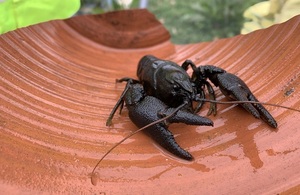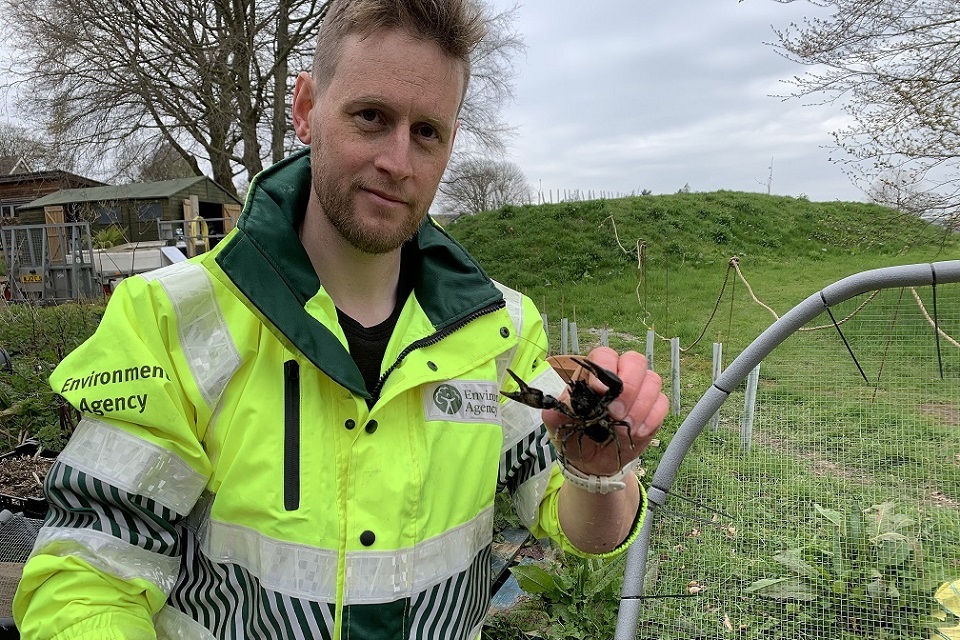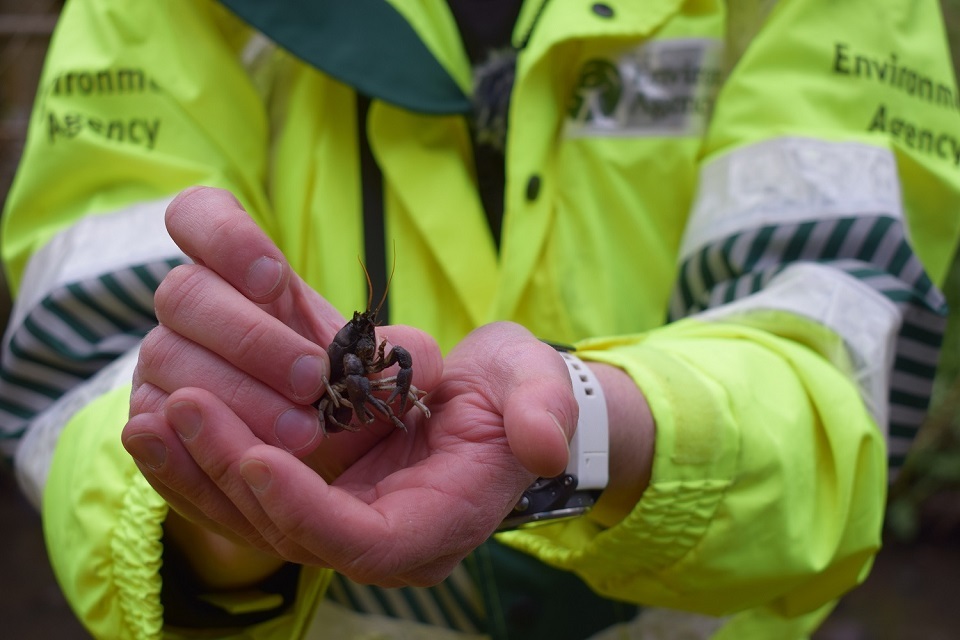Race against time to save endangered species from deadly disease
Populations of native white-clawed crayfish in danger of being wiped out are being rescued in Environment Agency operations in West Yorkshire.

Image shows one of the white clawed crayfish rescued from Meanwood Beck
Biodiversity specialists have carefully planned rescues after the invasive American Signal crayfish and a disease it carries - crayfish plague – are moving through parts of the River Aire catchment.
Last week, specialists carried out a rescue at Meanwood Beck in Leeds, where crayfish plague was detected during water sampling. A section of the watercourse upstream of where the plague was found was cut off and fish safely removed before Environment Agency experts carried out a search for native crayfish.
Those rescued, which included females carrying eggs, were then taken for safekeeping in quarantine at Leeds University and York Gate Gardens. Health checks will ensure they are free from crayfish plague before they are released at a future date.
In the coming weeks, officers will also carry out a rescue at Pudsey Beck, where the presence of American signal crayfish have been confirmed.
The Environment Agency is working with partners including Yorkshire Water and Yorkshire Wildlife Trust to develop a network of ‘ark’ sites, which are locations in catchments where invasive crayfish, and crayfish plague, are absent.
Here, native crayfish populations can be protected, away from threats. In the future, it’s hoped to use crayfish from these ark sites to repopulate watercourses.

Image shows one of the white clawed crayfish rescued from Meanwood Beck, being held by the EA's Tom Pagett.
‘We must act to preserve what we can’
Environment Agency biodiversity specialist Tim Selway, who is leading the project, said:
With so few populations of native crayfish remaining, we must act to preserve what we can.
The project has taken a lot of planning as we have to ensure the right conditions, that we have the correct licences to handle and move the crayfish from Natural England, and to make sure there is no impact on other wildlife in the river before going ahead.
The endangered white-clawed crayfish plays a vital role in keeping our waterways clean and as a source of food for other native species, so it’s vital we take action to ensure its survival.
Crayfish plague is fatal for the native species but hopefully those rescued from Meanwood Beck last week will now be able to thrive in another suitable location free from the danger of disease.
Rare white-clawed crayfish are the UK’s only native, freshwater crayfish, and are most at risk from the American signal crayfish, which spread crayfish plague and compete for food. They have struggled to survive after the more aggressive signal crayfish population has taken hold across the country.

The images shows one of the white clawed crayfish rescued from Meanwood Beck.
Check, clean and dry advice
Environment Agency investigations revealed there are no signal crayfish present in Meanwood Beck, which means the disease spores were most likely accidentally transferred from another infected watercourse, either via equipment, clothes, boots or paws.
Once crayfish plague is present in a watercourse the white-clawed crayfish will usually all succumb to the disease over several weeks or months as the fugus spreads through the river.
Officers are now calling for people to play their part by making sure they Check, Clean and Dry to prevent the spread of invasive species.
Tim added:
This situation shows just how easy it is to spread a fatal disease which can wipe out an endangered population and everyone can play their part to prevent this from happening.
While our proactive water sampling meant we’ve been able to take steps to protect a small number of this population at Meanwood Beck, this might not always be the case.
I would urge people to think before they go into a watercourse - are their boots cleaned from previous walks or have they cleaned their fishing equipment, for example. All of this really matters.
Anything that has contact with the water and riverbank needs to be cleaned thoroughly and dried until it has been dry for 48 hours. If this is not possible, cleaning and the use of an environmentally friendly aquatic disinfectant is recommended. This will make sure all aquatic diseases and invasive species are killed. More information can be found on the Invasive non-native species website.
If you see any crayfish, alive or dead, leave it where it is and report it immediately to the Environment Agency on 0800 807060. If possible, take close-up photos of the crayfish to help identify the species. It is illegal to handle or remove crayfish from the water without the correct licences.